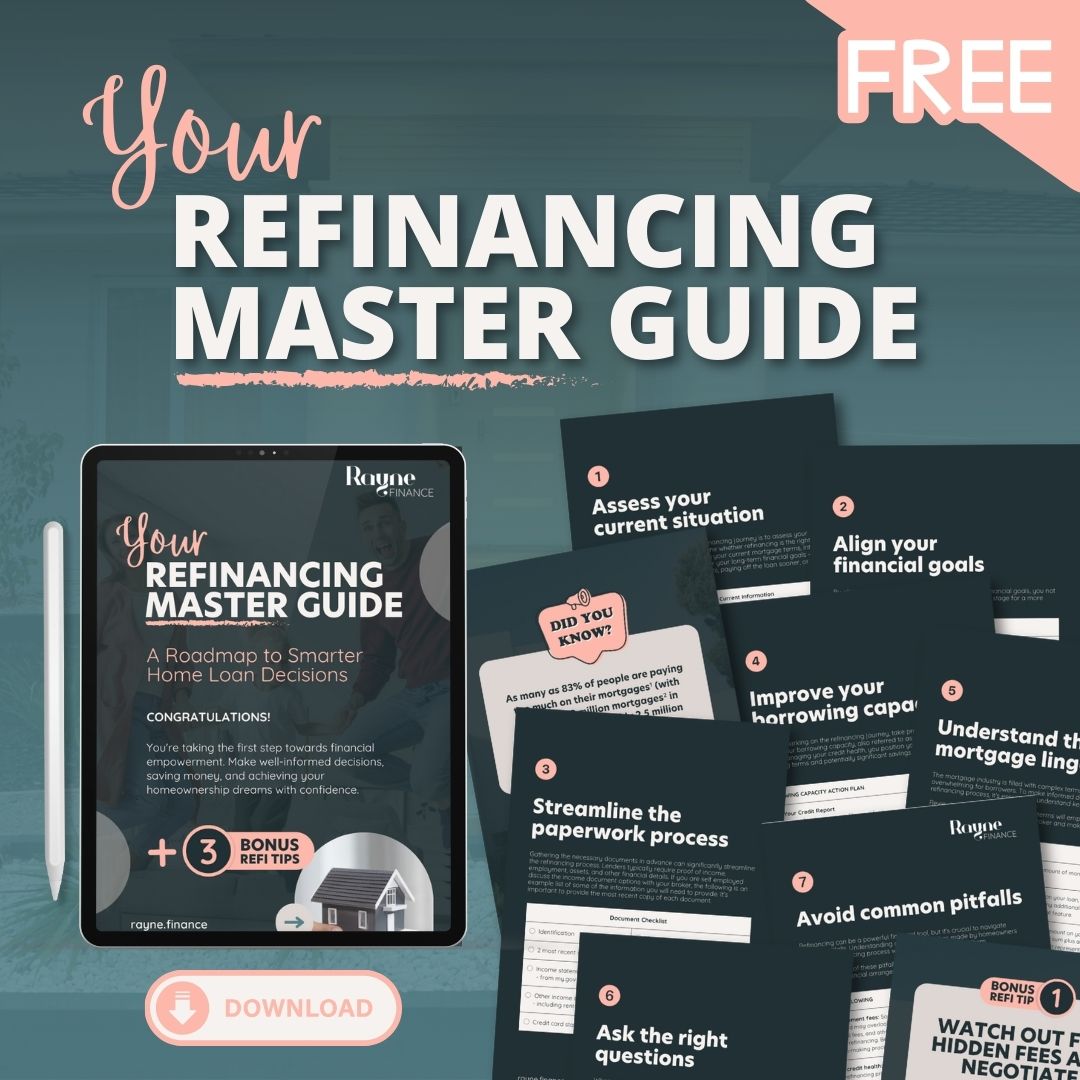Every extra dollar you pay into your loan reduces your outstanding balance, which in turn reduces the interest charged. For example, if you owe $500,000 on your mortgage and have $30,000 in redraw, you will be charged interest on only $470,000.
The redraw facility also lets you access these extra repayments if needed. For example:
Your minimum monthly repayment is $2,000, but you decide to pay $2,500 each month.
After 12 months, you will have made $6,000 in extra repayments ($500 x 12).
If your loan has a redraw facility, you can withdraw up to $6,000 when required.
Redraw vs offset account
Both redraw facilities and offset accounts reduce the ‘interest bearing’ portion of your loan, however they work differently:
Redraw facility: Extra repayments sit within your loan, reducing your loan balance and interest costs. If you withdraw these funds later, you are essentially increasing your loan balance again, which may have tax implications if the property is an investment.
Offset account: This is a separate transaction account linked to your loan. The money in this account offsets your loan balance, reducing the interest charged, but because it remains separate from your loan, withdrawals are treated as normal bank transactions rather than borrowing.
Another key difference is that redraw facilities may require approval or processing time, whereas offset accounts provide immediate access to funds.
REDRAW PROS
Reduces your interest
Extra repayments reduce your loan balance, lowering interest costs.
Encourages disciplined savings
Funds aren’t as easily accessible as an offset account, helping to prevent impulse spending.
Promotes flexibility
If needed, you can access the extra repayments rather than taking out a personal loan or using credit cards.
REDRAW CONS
Limited access to funds
Some lenders may impose restrictions, withdrawal limits or waiting periods.
Less flexible than offset
If you need frequent access to your extra repayments, an offset account may be more suitable. There may also be minimum withdrawal amounts for a redraw.
Potential fees
Some lenders may charge a fee to redraw.
What happens to the redraw when the loan is paid off?
Once your loan is fully repaid, any remaining redraw balance may no longer be accessible. Some lenders automatically apply redraw funds toward paying off the loan, while others may allow you to withdraw the remaining balance before closure.
It’s important to check your lender’s policies when deciding if a redraw is right for you.
Licensing statement: Rayne Finance ABN [70 605 100 838] is authorised under LMG Broker Services Pty Ltd Australian Credit Licence 517192. Disclaimer: (1) As with any financial scenario there are risks involved. This information provides an overview or summary only and it should not be considered a comprehensive analysis. You should, before acting in reliance upon this information, seek independent professional lending or taxation advice as appropriate and specific to your objectives, financial circumstances or needs. This publication is provided on the terms and understanding that: (2) LMG Broker Services Pty Ltd, Rayne Finance (Seed Lending Pty Ltd) and the authors, consultants and editors are not responsible for the results of any actions taken on the basis of information in this publication, nor for any error in or omission from this publication. (3) LMG Broker Services Pty Ltd, Rayne Finance (Seed Lending Pty Ltd) and the authors, consultants and editors, expressly disclaim all and any liability and responsibility to the maximum extent permitted by the law to any person, whether a purchaser or reader of this publication or not, in respect of anything, and of the consequences of anything, done or omitted to be done by any such person in reliance, whether wholly or partially, upon the whole or any part of the contents of this publication.
Explore other FAQs and Facts
Rental growth slows as affordability is stretched
Rental growth slowed in 2024, despite the national median rent rising 4.8% for the year. Affordability pressures led renters to form larger households, easing demand. Meanwhile, increased investor activity added supply, lifting vacancy rates slightly to 1.9%. Still, with rents rising and vacancies low, many investors remain in a strong position.
Is the property downturn already over?
Australia’s property market rebounded swiftly in early 2025, reversing December’s brief price decline. Growing expectations of interest rate cuts have boosted confidence, while constrained housing supply continues to drive long-term price growth. With construction delays and undersupply persisting, the market’s dynamics are shifting toward sustained appreciation, rather than traditional boom-and-bust cycles.
Rates are on the move.
Are you getting the best deal on your mortgage?
The Reserve Bank of Australia’s recent cash rate cut presents an opportunity for homeowners to reassess their mortgage. With rates heading downward, it’s the perfect time to refinance, consolidate debt, or increase repayments to pay off your loan sooner. Take control of your financial future and explore your options now.
How to buy a property when you’re self-employed
Securing a home loan when you’re self-employed can be challenging, as lenders often view your income as less predictable and your financial position more complex. Strengthening your finances with stability and transparency can improve your chances. This article shares practical tips to help you secure better loan options, lower rates, and more lender interest.
The pros and cons of paying for LMI
(lenders mortgage insurance)
Lenders mortgage insurance (LMI) often gets a bad rap, but it can open doors for borrowers with smaller deposits. While LMI adds costs, it enables buyers to enter the property market sooner, potentially avoiding years of savings and rising property prices. Understanding LMI’s role is key to making informed decisions.
How to prepare for buying an investment property
Thinking about buying an investment property in 2025? The key to success starts with making yourself as creditworthy as possible. From increasing savings to understanding loan options and deposit requirements, there’s a lot to consider. Here’s how to set yourself up for a strong start.
2025 Money Moves:
Tips for Homeowners, Buyers, and Business Owners
The new year presents an ideal opportunity to reassess your finances. Whether you’re planning to buy property, managing a home loan, or running a business, there are key actions you can take to improve your financial situation. From enhancing your credit score to exploring refinancing options, small changes can make a big impact.
How the property market looks as we head into 2025
Australia’s property market is shifting, with a clear divide between strong and weak performers. While Brisbane, Perth, and Adelaide see robust growth, Sydney, Melbourne, Canberra, and Hobart face slower gains. As interest rate cuts loom in 2025, understanding regional trends will be essential for buyers and investors alike.
December cash rate on hold: 6 reasons to be optimistic about 2025
The Reserve Bank of Australia has kept the cash rate on hold once again, maintaining its cautious stance. While hopes for a rate cut remain unfulfilled, there are six reasons to stay optimistic, even as inflationary pressures and low productivity continue to shape the RBA’s approach to economic stability.
Australian properties see record profits in 2024
The 2023-24 financial year marked a milestone for Australian property sellers, with 96% of houses sold nationwide yielding a median profit of $326,000. This trend reflects the long-term value growth of homes, with capital cities and regional areas both benefiting from a robust market and rising property prices.














